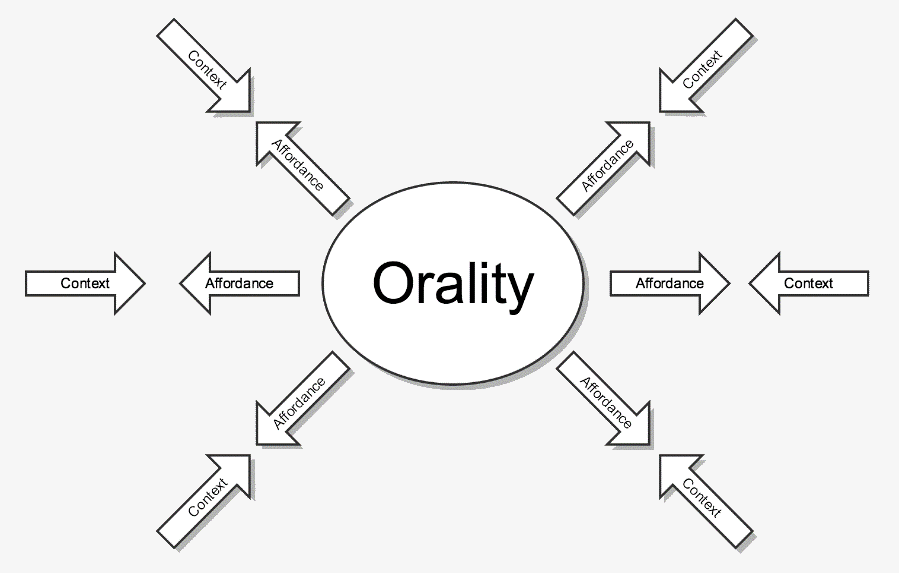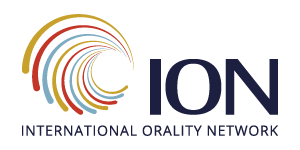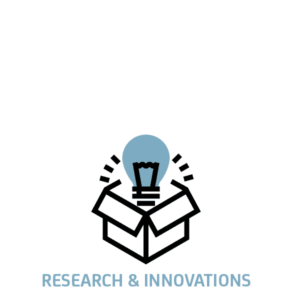The following is a chapter from the book ‘Oralities and Literacies: Implications for Communication and Education‘. A chapter will be posted here each week.
Chapter 1 – Synthesizing the Orality Debate
by Ryan Bush, Ph.D.
Orality as a field of study is relatively young. We have a thesis, but we should expect antithesis and strive for a more accurate and nuanced synthesis. For the field of orality to advance, the status quo must be challenged, however painful the process may be. Certain ideas, upon which we have theorized, from which we have drawn conclusions, and by which we have directed methods, are dear to us. After all, our investment in them is significant. Yet, our attachment to these ideas may stymy the progression essential for a proper understanding of orality and, by extension, our effectiveness as narrators of the good news of Jesus to the oral majority.
Walter J. Ong has had tremendous impact on the development of orality theory and practice among evangelicals. Ong argues that orality embodies a codified, unbending, and universal set of characteristics demonstrated in cultures that have not interiorized the technology of phonetic symbolization of spoken language. His notions can be detected as presuppositional in the majority of evangelical treatments of orality, both academic and popular. A growing chorus of voices within academia, however, is questioning Ong’s conclusions. Evangelicals who are dedicated to applying orality principles to cross-cultural communication must reckon with these criticisms.
The Problem and the Payoff
From the early stages of orality studies there have been those who posited a contrary view of orality than that which Ong would come to personify. This opposing perspective continues to gain traction because its ranks are growing as evidence mounts. A recurrent and powerful case-study looks at the Vai of Liberia, which concluded that it is the nature of educational process, not literacy itself, which engenders abstract thought (Scribner and Cole 1988). This assertion is anathema to the classic conception of orality and literacy. Didn’t Lucien Levy-Bruhl (1923) and Claude Levi-Strauss (1962) already settle this question? Did Aleksander Luria not prove it through his empirical research in Central Asia (1976)? Perhaps not.
Why does it matter? For anthropologists, sociologists, and the like, it matters because accuracy matters; and orality is now being applied in multiple disciplines. Thus, a seemingly obscure niche of anthropology has turned out to have far-reaching consequences. For those of us who are followers of Jesus Christ it matters because communicating the gospel across cultural barriers is an essential element of the Great Commission; and more than 80 percent of the world’s population functions within the orality framework (Lovejoy 2012). The prevalence of oral learners alone is sufficient stimulus to analyze the nature of orality. However, when we apprehend the extensive effects orality implies in evangelization, discipleship, and church planting, this issue becomes critical to address.
The payoff is immeasurable. If oral cultures are to be effectively engaged by textual messengers, it is of vital importance that methodologies, processes, and procedures embedded within the oral culture itself be considered and taken captive in order to be employed by the messenger in the work of communicating the message. If oral learners are not taught within the framework of their cognition, media, and structures, then they remain virtually unaffected by the message, and they will assuredly be hampered in passing it along. One investigation found that missionaries who assessed learning preferences and strategized accordingly saw 340 percent more fellowships planted than those that did not (Woodberry 2011).
The Universal View
Scholars, researchers, and practitioners agree that the interiorization of phonetic symbolization of language affects how people interact with the world (Cole and Nicolopoulou 1992). However, the nature of that interaction is contested. Two primary perspectives persist—the universal and the contextual view. The universal view of orality is distinguished by its assumption that orality and literacy engender certain universal consequences in cognition.
The universal view conceives of the relationship between orality and literacy as a continuum. As societies move along the continuum (from orality to literacy) a cognitive shift occurs, which then produces a certain kind of society. As a society advances toward textuality it divests itself of orality at the same rate at which it interiorizes written language. There is a direct, proportionate, and opposite effect (Raible 2002).

Figure 1: The universal view posits a gradual shift, but implies a sharp dichotomy between orality and textuality.
While a continuum assumes some overlap, descriptions of orality and literacy in the universal view tend toward a dichotomous characterization, which assumes a great divide between oral and literate milieus (Makutoane 2015).
Oral and literate characteristics are generally depicted in opposite columns of a table, like the one represented below (Madinger 2010; Parker 1980). Madinger and Parker, as well as Ong, would eschew the notion that these characteristics are polarities and would certainly describe these attributes as tendencies. The point here is that how we visually depict differences between orality and literacy may indirectly create the idea that these characteristics are mutually exclusive, and that these societies neatly exist in isolation from one another.
| Oral Cultures | Literate Cultures | |
| Spoken
Storyline Concrete |
Communication | Written
Outline Abstract |
| Communal | Lifestyle | Institutional |
| Social Dimensions | Time and Space | Mathematical Dimensions |
| Immediate | Gratification | Deferred |
| Circular
Conceptual |
Life Perspective | Linear
Historical |
| Group Oriented
Apprenticeship Teacher is Valued Mnemonic Devices |
Learning Patterns | Individually Oriented
Textbook Information is Valued Archived Text |
| Words are Events/Alive/Attached | Lexicon | Words are Objects/Dead/Detached |
In the universal view, literacy is conceived of as an autonomous causal agent in the progression of mankind. Civilization of mankind marches in step with its evolution toward literacy: “the depicting of objects appropriate to a savage people, signs of words and of prepositions, to a barbaric people, and the alphabet to a civilized people” (Rousseau, 1966). Literacy engenders certain characteristics that produce societies that are rationalized, bureaucratically organized, and democratic (Cole and Cole 2006). In other words, “Speech makes us human and literacy makes us civilized” (Olson 1988).
Those who hold the universal view point to the work of Aleksander Luria to support their position. Luria, Lev Vygotsky’s student and colleague, published an account of their research comparing cognitive performance of literate versus non-literate rural folk in Central Asia in the 1930s, presenting a variety of reasoning and classification problems to their subjects (i.e. syllogisms). Luria discovered a commonality across the research that supported the classical view of literacy and the development of civilization. His findings presented contrasting cognitive abilities. Literate folks demonstrated the ability to reason abstractly, whereas illiterate did not (Luria 1976).
Similarly, J. S. Bruner and his colleagues conducted organized research contrasting schooled and unschooled children found within the same country (i.e. Senegal, Mexico). Like Luria, their research focused on determining cognitive abilities in reasoning and categorization. Their results and conclusions echoed those of Luria (Bruner 1966 ).
Walter J. Ong (1912-2003) is highly regarded within the universal view camp. Ong’s conclusions in Orality and Literacy (1982) are generally regarded as accurate depictions, and serve as the foundation for development of theories, strategies, and methodologies. His chapter entitled “Some Psychodynamics of Orality” has been particularly influential in evangelical treatments of orality. In fact, one is hard-pressed to find a scholarly evangelical treatment of orality that does not at least mention these psychodynamics, and many rely heavily on them.
The Contextual View
Brian Street has strongly criticized Ong’s views. He assesses Ong’s claims on three levels: methodological, empirical, and theoretical; and he finds serious flaws in all three, concluding, “Ong’s thesis, then, appears to have little value in the investigation of the relationship between orality and literacy” (Street 1995, 158). J. A. Loubser argues that Ong’s typologies can only be applied to primal oral cultures, of which very few exist. He argues that Ong’s defect is that he does not account for the many shades of orality that exist in societies (Loubser 2002).
The contextual view opposes the assertion that orality and literacy are isolated cognitive realities, and instead insists upon continual interaction rather than a stark polarity between oral and literate functions in individuals and communities (Cole and Nicolopoulou 1992). Further, the contextual view is supported by a growing body of empirical evidence (Bernstein 1972; Hymes 1974; Tannen 1982; Scribner and Cole 1988; Filliozat 1993).
Proponents of the contextual view argue that orality is rarely absolute within a culture, and the pursuit of pure orality is misguided and quixotic. Rather, evidence suggests that orality and literacy exist simultaneously—they coevolve and intimately interact with one another. Further, the interface between orality and literacy is local in the sense that this interplay is profoundly affected by context (De Vries 2012). Thus, the contextual view rejects both the autonomous causal agent notion as well as a simplistic binary of orality versus literacy arguments out-of-hand.
While the universal view holds that orality is characterized by effects and interactions that are always and everywhere static without regard to local human purposes or conditions, the contextual view contends that orality is profoundly and constantly in flux as it is augmented and constricted by local realities. Finnegan states, “There is nothing strange or unusual in the interaction of oral and written forms…it is time to move decisively away from the idea that such interactions are ‘transitional,’ as if some half-way position between two separate stages” (Finnegan 2007, 147).
Where We Are Now
Evangelical engagement with orality studies has leaned toward a universal view of orality heavily influenced by Ong. By way of example, in 2005 the Issue Group 25 of the 2004 Lausanne Forum produced the seminal document Making Disciples of Oral Learners. Consider their definition of orality: “The constellation of characteristics (cognitive, communicational, and relational) that are typical of cultures that function orally” (ION/LCWE 2004, 84). While this definition is a cogent and concise conception of orality, it assumes a universal view. Are we making a mistake by supposing that a “typical,” universally applicable oral “constellation of characteristics” exists?
Ruth Finnegan frets that academia has turned a useful adjective into a noun and thrust upon it more pressure than it can bear. She questions the prudence of converting localized observations into generalized and abstract models, which are then reckoned to hold universal sway. The implication of the aforementioned definitions is that we have ferreted out the oral process; and this process is then mechanically applied in any context that is determined to be oral. Finnegan writes, “It seems a gross-oversimplification—either that or a smokescreen, producing high-sounding academic concepts to fill in for our own ignorance” (Finnegan 1990, 141).
A Way Forward
We must be careful to avoid certain pitfalls as we move toward accuracy in our conception of orality. On the one hand, empirical research continues to demonstrate the error of assuming a strictly binary conception of orality and literacy. On the other hand, it is unhelpful to argue that orality is not anything—nothing clear or measurable to which this term can refer (Finnegan 1990). Further, we must avoid positing a conception of orality that drastically oversimplifies a complex reality. We must guard against reducing a rich diversification of human expressiveness to what is presumed to be a simple, static construct.
In our progression toward accuracy in describing orality we would do well to add oralities to our vocabulary. Orality is useful in describing an abstract concept, but oralities is more precise language as we bring this abstract concept to bear in local cultures. Every culture comprises unique contextual factors that augment and restrict oral affordances; and, as such, every culture merits specific research that informs contextual approaches. Harriet Hill remarks, “Rather than polarizing oral people with literates, it is more correct to think of all people as oral, with some also literate. In most communities in the world today, both orality and literacy are present” (Hill 2010, 217).
Grant Lovejoy (1999) states, “We have also learned to steer away from universalizing claims about orality and oral cultures. ‘All oral cultures…’ is a dangerous way to begin a sentence” (p. 9). Rather than describing orality in terms of static, universal characteristics, it is more helpful to speak in terms of affordances. Generally used in relation to the cognitive sciences, affordances refers to the qualities or resources that the environment offers an animal; the animal in turn must be enabled to perceive it and utilize it (Gibson, 1999). Referring to literacy, James Gee (2006) argues that it does not have necessary effects, but rather has affordances that “lead it relatively predictably to have certain sorts of effects in certain sorts of contexts” ( p. 153).
Similarly, orality is accompanied by specific affordances that engender unique results in specific milieus. In this conception of orality the dynamic interaction between affordances and local context is critical. This interaction must be carefully considered in every local context.

Figure 2: Orality affordances are augmented and constricted by contextual factors making each particular oral milieu unique.
Orality may not be as simple and static as we thought, but neither is it nebulous to the point of non-existence. Rather, orality is a qualitative and quantitative reality that is deeply affected by local contexts. I submit the following recommended adjustments to our conception of orality based on careful consideration of both Ong’s conception as well as dissenting views, especially the contextual view.
- Orality is a quality that is essentially human. Thus, all cultures contain oral affordances.
- Orality describes contextual affordances, not universal characteristics.
- Affordances may be augmented or constricted by contextual factors.
- The presence of an oral affordance within a culture does not necessarily imply the absence of a corresponding affordance (i.e. operational thought does not abrogate abstract thought).
- Oralities differ from context to context, which necessitates contextual strategies and methodologies.
Conclusions
Key questions still need answers. What exactly are the affordances of orality? How do these affordances interact with local contexts? How can we discover them and develop strategies and methods to match them? If we concede that orality is profoundly affected by context and that localized oralities require unique approaches, then we must pour resources into empirical research. The only way to achieve the “big picture” of orality is by studying the manifold oralities across the globe. As diligent students of the gospel and culture we would do well to eschew cookie-cutter approaches that assume a universal, static conception of oral milieus, and instead become students of local contexts.








